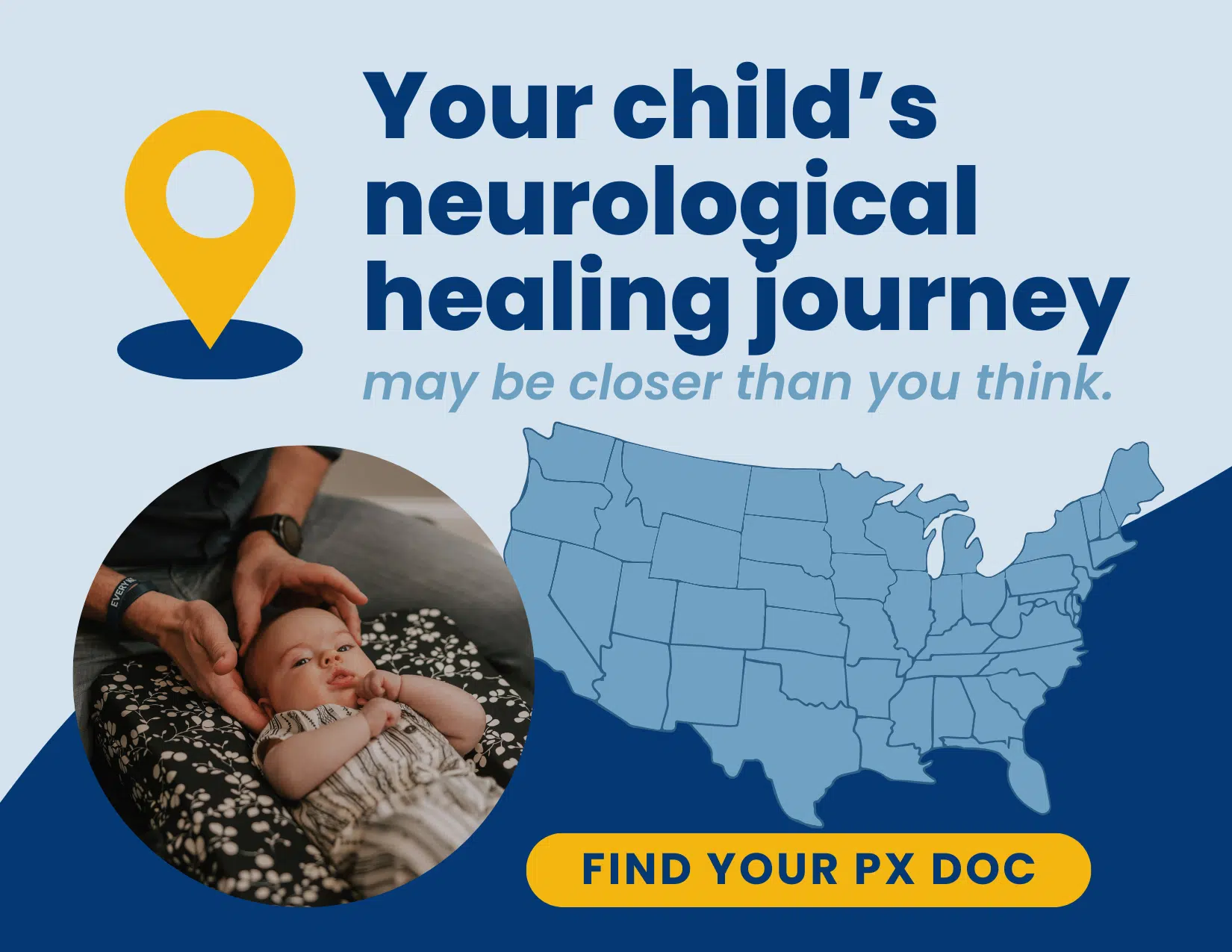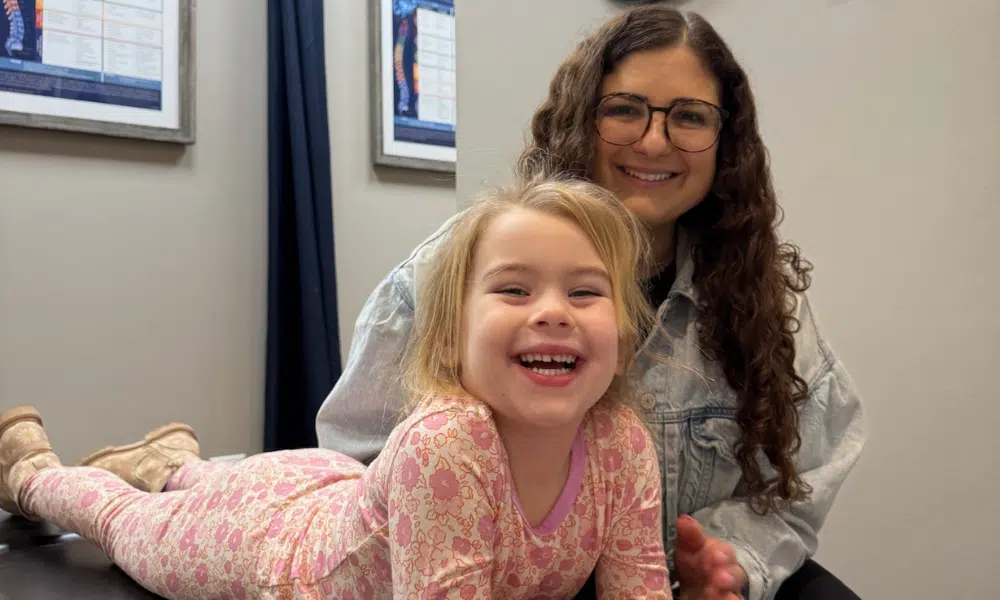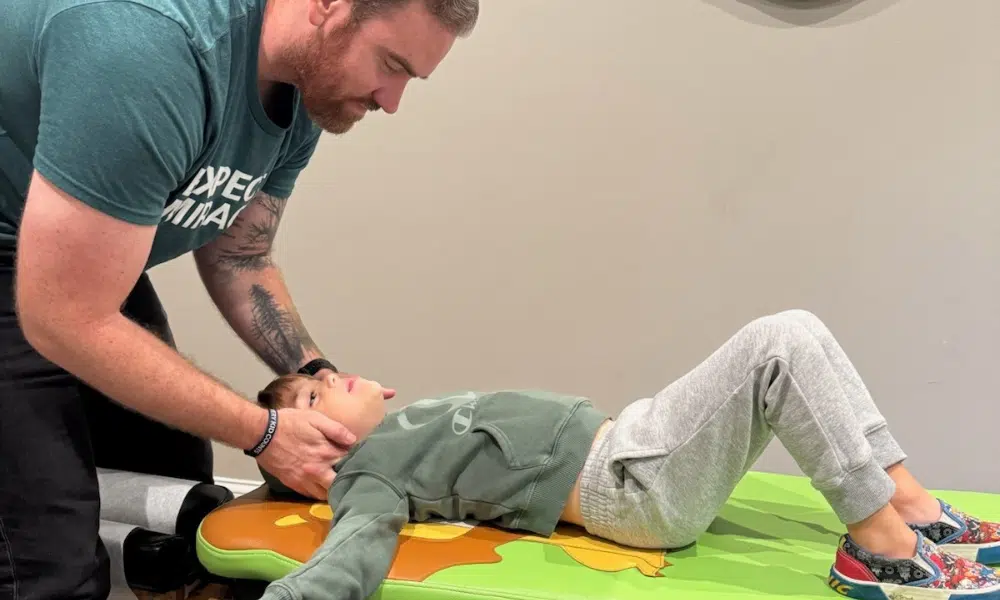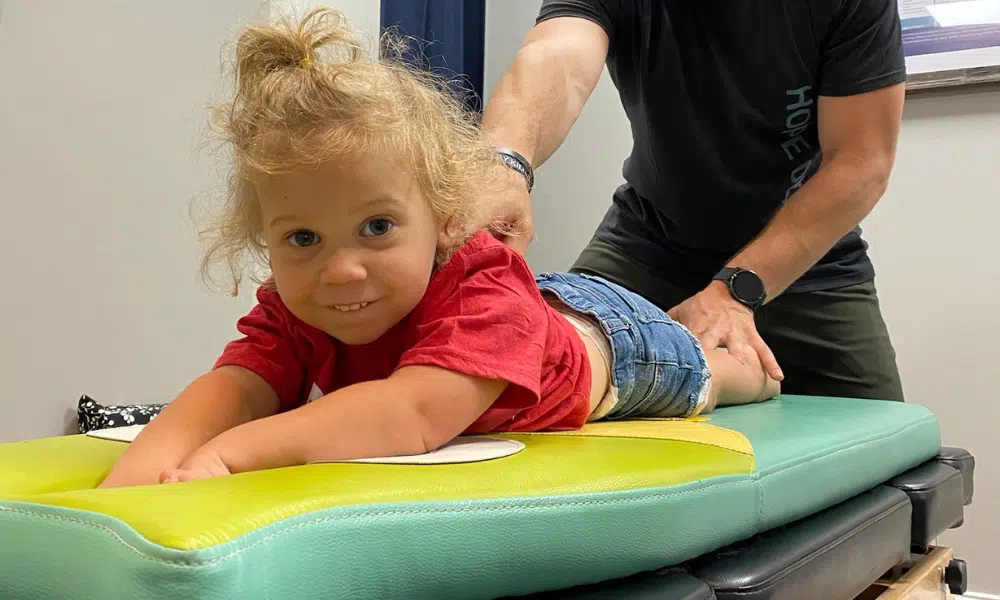Imagine this: Your child is a bubbly, engaged toddler, meeting all their developmental milestones and filling your heart with joy. Then, seemingly overnight, they start to withdraw. They stop responding to their name, lose words they once had, and seem to retreat into their own world. This is the reality for many parents whose children experience regressive autism.
Regressive autism is a condition in which a child appears to develop typically but suddenly begins to lose acquired language, social skills, or both, usually between the ages of 15 and 30 months. Studies suggest that regression may occur in as many as 40% of children diagnosed with Autism Spectrum Disorder (ASD).
For parents, watching their child’s hard-earned skills slip away can be heartbreaking and frightening. They may feel helpless, confused, and desperate for answers. Unfortunately, the conventional medical approach often fails to provide satisfactory explanations or solutions, focusing primarily on blaming genetics and managing symptoms rather than addressing the root cause.
But there is hope! By understanding the earliest regressive autism signs and exploring a Drug-Free, Neurologically-Focused approach like that offered by PX Docs, parents can empower themselves to help their children heal and thrive!
Once we break down the neuroscience and sequencing of various neurological stressors and triggers that often lead to the regression, you’ll have a better understanding of not only what led to your child’s developmental regression, but also a much clearer path forward in knowing how to best help them heal, recover, and get back on track developmentally.
What is Regressive Autism?
Regressive autism is one of the different types of Autism Spectrum Disorder (ASD) characterized by a child’s sudden or gradual loss of previously acquired communication, social, or behavioral skills. This regression typically occurs between 15 and 30 months of age, with an average onset at around 19 months.
Children with regressive autism appear to develop typically in their early months, meeting expected milestones, but then suddenly or progressively lose skills they had once mastered. However, what is often missed is that the traditional way we track the health and development of the brain and nervous system is wildly outdated and simplistic, and to really understand what’s going on here, we need to look way deeper than we currently are in most conventional pediatricians’ offices when it comes to development and Autism Spectrum Disorder.
Unlike early-onset autism, or Kanner’s Syndrome, where signs are apparent from a very young age, children with regressive autism have a distinct period of typical or near-typical development followed by a significant deterioration in abilities. The loss of skills can manifest in various ways, such as:
- Loss of speech and language, including words or phrases the child once used
- Decreased interest in social interaction and engagement
- Reduced eye contact and responsiveness to their name
- Emergence of repetitive behaviors or unusual sensory interests
Historically, regressive autism was considered a rare subtype of ASD. However, recent studies suggest that autism regression may be more common than previously thought, with estimates ranging from 15 to 40% of all ASD cases.
Research also indicates that children with regressive autism tend to have more severe signs and greater support needs compared to those with early-onset ASD. The sudden or gradual loss of abilities can deeply concern parents and significantly impact the child’s overall development and well-being.
Regressive Autism Signs
Recognizing the signs of autism is crucial for early intervention and support. While every child’s experience with regression is unique, there are some common patterns to look out for:
- Age of onset: Regression typically occurs between 15 and 30 months of age, with an average onset around 19 months. However, some subtle signs of regression may appear even earlier.
- Loss of previously acquired skills: Children with regressive autism may lose skills in language, communication, social interaction, and play. This can include words or phrases they once used, decreased interest in social engagement and interaction, reduced eye contact and response to their name, and loss of previously acquired play skills or interests.
- Behavioral changes: As children lose skills, they may also develop new behaviors or challenges, such as:
- Increased repetitive behaviors or stimming (e.g., hand flapping, spinning)
- Heightened sensitivity to sensory input (e.g., sound, touch, light)
- Sleep disturbances and difficulty with self-regulation
- Gastrointestinal issues and changes in eating habits
- Comparison to typical development: It’s essential to consider a child’s development in the context of typical milestones. If a child who was once babbling, making eye contact, and engaging in social play suddenly stops doing these things, it may be a red flag for regressive autism.
Early recognition of these signs and symptoms is essential for getting children the support they need. If you notice any concerning changes in your child’s development, trust your instincts and reach out to your pediatrician or a developmental specialist. Remember, early intervention can make a significant difference in your child’s long-term outcomes.
Causes and Risk Factors of Regression in Autism: “The Perfect Storm”
Because we know regressive autism, and really autism overall, is such a multifaceted, complex condition, it’s impossible to lay out the exact causes and risk factors for every child with regressive autism, since no two cases are the same. However, at PX Docs and throughout the more modern and advanced scientific community, we now know that it is a combination of genetic and environmental factors that are at play, with a larger emphasis on the latter in the vast majority of cases. In 2008, we first began to refer to this complex interplay as “The Perfect Storm.”
The “Perfect Storm” scientific concept suggests that regressive autism may result from an accumulation of stressors and challenges that disrupt a child’s neurodevelopment during critical periods of growth and development. These factors can include:
- Fertility challenges
- Prenatal factors: Maternal stress, inflammation, and exposure to toxins during pregnancy can impact fetal brain development and increase the risk of autism and other neurodevelopmental conditions.
- Birth trauma and interventions: Complications during labor and delivery, such as prolonged labor, fetal distress, or the use of interventions like forceps or vacuum extraction, can cause physical and neurological stress on the infant.
- Genetic predisposition: While regressive autism is not solely determined by genetics, certain genetic factors may make a child more susceptible to the effects of environmental stressors.
- Toxic overload: In the first months and years of life, a child’s developing nervous system is particularly vulnerable to toxins and stressors such as:
- Repeated infections and the overuse of antibiotics
- Poor gut health and imbalances in the gut microbiome
- Persistent inflammation
- Environmental toxins and pollutants
- Additives and other chemicals in foods and drinks
The “Perfect Storm” theory highlights the complex interplay between a child’s genes and their environment. It suggests that when multiple risk factors converge, they can overwhelm a child’s developing nervous system’s ability to adapt and keep on track developmentally, leading to the neurological dysfunction and developmental regression seen in regressive autism.
By understanding the potential causes and risk factors for regressive autism that show up early and often in these sensitive and critical periods of development, we can begin to develop more targeted, drug-free approaches to support children and families affected by this condition.
Sensitive and Critical Periods of Development
It’s worth diving deeper into what it really means for a child to go through this sequence and series of Perfect Storm stressors during these early, sensitive, and critical periods of development.
While the most obvious and hallmark signs of regressive autism and developmental delays will often not present until the child is nearly 2 years old or even later, when we dig into the child’s case history and pair it with the latest understanding of neurodevelopmental science and research – it’s clear to see that the trouble is often brewing far earlier than the presentation of symptoms and daily life challenges.
Fertility challenges and maternal distress during the prenatal period can alter and delay fetal development within the autonomic nervous system and vagus nerve, leading to challenges such as anxiety or preeclampsia for the mother, preterm birth, a complicated and high-intervention labor and delivery, colic and fussiness, difficulty latching and nursing, and so much more. However, these issues are most commonly dismissed as “normal,” and parents are told, “don’t worry, they’ll grow out of it.”
Instead, many of these children may be experiencing enough alteration and disruption in their overall brain and nervous system development to lead them down a road of regressive autism, sensory processing disorder, and so much more.
We can’t simply allow our conventional healthcare system to dismiss these early warning signs of trouble as “normal” and expect children to just be fine. We need to look deeper for signs of nervous system dysfunction and trouble brewing within the developing brain, autonomic nervous system, vagus nerve, as well as the gut-immune system – all things we’ll discuss in more detail throughout the rest of this empowering article.
Conventional Medical Approach and Its Limitations
When a child is diagnosed with regressive autism, the conventional medical approach typically focuses on managing symptoms and providing support through behavioral and educational interventions. While these therapies can be helpful, they often fall short of addressing the underlying neurological and physiological imbalances that contribute to regressive autism.
The diagnostic process for regressive autism usually involves a combination of observation, parent interviews, and standardized assessments such as the Autism Diagnostic Observation Schedule (ADOS) and the Autism Diagnostic Interview-Revised (ADI-R). These tools can help identify autism symptoms, but they do not provide insight into the root causes of the child’s challenges.
Once a diagnosis is made, the conventional approach often relies heavily on behavioral therapies such as Applied Behavior Analysis (ABA), speech therapy, and occupational therapy. While these interventions can help children develop new skills and strategies for communication and social interaction, they do not address the underlying neurological dysfunction that may be contributing to their symptoms.
In some cases, doctors may also prescribe psychiatric medications to manage challenging behaviors or co-occurring conditions such as anxiety or ADHD. However, these medications often come with significant side effects and do not promote true healing or restoration of function.
At PX Docs, we believe that the conventional medical approach to regressive autism is limited by its narrow focus on symptom management. By failing to address the root causes of neurological dysfunction, this approach may miss opportunities to promote real healing and recovery for children with regressive autism.
Addressing the Foundational Root Cause of Autism Regression
We understand that regressive autism is not just a behavioral or developmental disorder but a complex condition with roots in the nervous system.
We believe that subluxation, dysautonomia (imbalance in the Autonomic Nervous System), nervous system dysregulation, and vagus nerve dysfunction can contribute to the development of regressive autism and other neurodevelopmental conditions.
The signs and symptoms associated with subluxation and nervous system dysregulation are similar whether discussing an infant struggling with colic or a toddler recently diagnosed with regressive autism. Both conditions struggle with essential nervous system functions, such as sleep, digestion, respiratory and immune health, regulating inflammation, elimination, and maintaining overall calmness, relaxation, and regulation. Neurologically, the two conditions are more similar than they are different.
This is not to say that every child with colic will develop regressive autism, but merely presented as a simple and straightforward way of stating the obvious – that we can’t continue to dismiss the multitude of health challenges infants and developing toddlers face that are clear signs of trouble brewing within the brain and body.
The first step in identifying the true root cause of regressive autism in your child is getting with a PX Doctor who will actually take the time to dig deeper into your child’s case history than any other provider ever has. While it may have appeared that things were going well on the outside as they made eye contact, started making sounds and speaking a few words, and interacting socially and emotionally – nervous system dysfunction and trouble may have been brewing on the “inside” leading to the child eventually losing the ability to adapt and function altogether.
Think of stress and dysfunction on the nervous system as having an internal “pressure sensor” where, over time, as the Perfect Storm of stress, dysfunction, toxicity, and other various challenges builds up – the brain and nervous system just become completely overwhelmed, dysregulated, and eventually exhausted.
One of the things we commonly find with regressive autism is that there were, in fact, signs of abnormal health and development that were quite obvious within that child’s case history, but the family’s conventional pediatrician just continued to dismiss them as normal despite the parents knowing deep down something was wrong, asking questions, and seeking better answers and more help.
The next step in helping your child with regressive autism is to identify areas of neurological interference and dysfunction, using our advanced diagnostic tools known as the INSiGHT Scans. These cutting-edge scans provide a detailed picture of a child’s nervous system regulation (or dysfunction if they’re struggling), allowing us to pinpoint areas of concern and develop targeted care plans, adjustments, and optimal care interventions

Our approach to care is centered around Neurologically-Focused Chiropractic Adjustments, which aim to restore balance and function to the autonomic nervous system, stimulate the vagus nerve, and calm the sympathetic storm that children with regressive autism are often stuck in.
In addition to chiropractic care, we also recognize the importance of supporting overall health and well-being through nutrition, gut health, and toxin reduction. Our drug-free approach addresses the multiple factors influencing a child’s neurological development and function.
Empowering Parents and Children with Autism Regression
Regressive autism can be a challenging and heartbreaking experience for parents, who may feel helpless as they watch their child slip away. But there is hope! By understanding the complex interplay of factors that contribute to autism regression and seeking out a Drug-Free, Neurologically-Focused approach, parents can empower themselves to help their children heal and thrive!
If you suspect your child may be experiencing regressive autism or if you have been struggling to find effective interventions, we encourage you to explore the PX Docs approach. We encourage you to visit our directory to find a qualified practitioner near you and take the first step toward unlocking your child’s innate capacity for growth and development.
Remember, you’re not alone on this journey. With the right support, understanding, and a willingness to look beyond the conventional paradigm, there is always hope for healing and a brighter future for your child and your family!



![[GRID] Calming the Sensory Storm WEBINAR PX Docs Webinar](https://pxdocs.com/wp-content/uploads/2025/11/GRID-Calming-the-Sensory-Storm-WEBINAR.png.webp)


